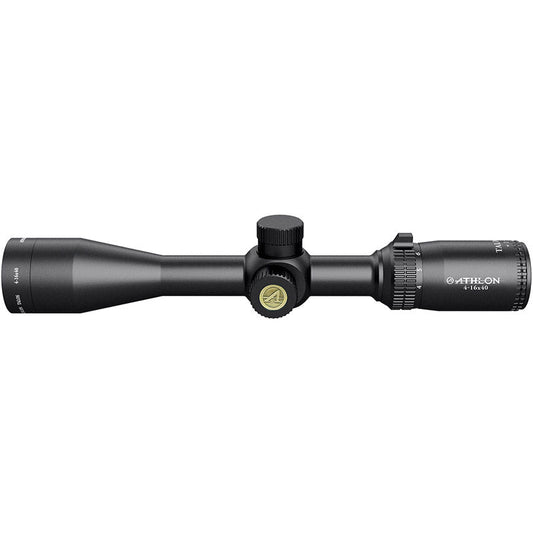

Athlon Optics Talos 4-16x40 Riflescope delivers reliable performance for both novice and experienced hunters. Featuring a versatile magnification range of 4x to 16x, this scope ensures quick target acquisition across various distances. The illuminated reticle enhances visibility during low-light conditions, allowing for precise aiming even at dusk and dawn. With fully multi-coated optics, the Talos provides bright, clear images that improve your shooting experience in diverse environments.
Constructed from aircraft-grade aluminum, this riflescope is both lightweight and durable, capable of withstanding harsh weather and rugged terrain. It is nitrogen purged to prevent fogging, ensuring a clear sight picture in varying temperatures. The shockproof design withstands heavy recoil, making it suitable for high-caliber rifles. This combination of features positions the Talos as a practical choice for serious hunters seeking reliability and performance in the field.
Key Features:
- ILLUMINATED RETICLE for improved visibility during twilight hunts.
- ETCHED GLASS RETICLE ensures durability and excellent support, making it shock-resistant.
- FULLY MULTICOATED optics for brighter images, enhancing your shooting experience.
- AIRCRAFT GRADE ALUMINUM body for unmatched strength to withstand tough terrains.
- ONE PIECE TUBE construction keeps moisture out, ensuring fog-proof reliability.
- WATERPROOF design protects your scope from harsh weather conditions.
- FOG PROOF for immediate target engagement in different temperatures.
- SHOCKPROOF design withstands 1000G recoil, making it perfect for heavy-caliber rifles.
Technical Specifications Table
| Specification | Details |
|---|---|
| Magnification | 4-16 |
| Objective Lens Diameter | 40 mm |
| Reticle | Mildot or BDC 600 IR |
| Tube Material | Aerospace Grade Aluminum |
| Length | 12.9" |
| Weight | 19.1 oz |
| Field of View @ 100 Yards | 24.1-6.28 ft |
| Eye Relief | 3.8-3.35 inches |
What's in the Box?
- Lens covers
- Padded case
- Neck strap
Customer Reviews
"Incredible clarity and durability! This scope has transformed my hunting experience!" – John D.
"Perfect for low light conditions. Highly recommend!" – Sarah T.
FAQ
How does the Athlon Optics Talos perform in low light? The illuminated reticle and multi-coated lenses provide excellent visibility during dawn and dusk.
Is this scope waterproof? Yes, the scope is designed to be waterproof, ensuring it performs well in harsh weather.
Can it withstand recoil from powerful rifles? Absolutely! The Athlon Optics Talos is shockproof and can handle up to 1000G recoil.
How do I maintain my Athlon Optics Talos? Regularly clean the lenses with a microfiber cloth and store it in a protective case.
How does this compare to other scopes? The Athlon Optics Talos offers exceptional clarity, durability, and versatility at a competitive price.
Looking for more? Check out our complete Athlon collection for other outstanding scopes like the Athlon Optics Argos and Athlon Optics Ares for even more hunting options!
You May Also Like
Here’s some of our most similar products people are buying. Click to discover trending style.










